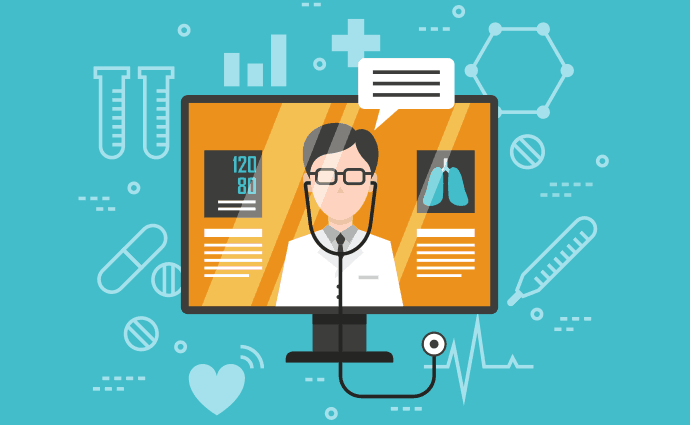By Bent Philipson
Telehealth has played an integral role in the healthcare industry for a while now, but many people are just now realizing its significance — and that’s largely in part because of the COVID-19 pandemic. But why now? Without telehealth, many patient populations wouldn’t have had access to the non-urgent but critical care services they needed without unnecessarily being exposed to the dangerous virus.
Telehealth allowed patients to receive care in the comfort of their own homes, while skilled nursing facilities (SNFs) and other long-term care centers also utilized telehealth’s capabilities to continue providing care to their own patients without sacrificing their access to life-saving services.
While the benefits of telehealth have never been clearer than during the pandemic, many are still confused and weary about its rapid growth and what this could mean for the healthcare industry beyond the pandemic. Will it still be a part of our lives as we go back to ‘normal’? What value do virtual health services provide beyond the pandemic? How can telehealth lessen the strain on our healthcare systems while improving quality of care for patients of all ages and backgrounds? All great questions. And all of which can be addressed by debunking the myths surrounding telehealth.
Myth: Telehealth is really only a means for virtual consultations in primary care settings.
This is one of the biggest misconceptions I hear when people discuss their opinions about telehealth. But it’s not just beneficial because you can virtually communicate with your physicians, telehealth actually plays a number of different roles and can span the entire duration of a patient’s journey.
Prior to the pandemic, and even today, the term ‘telehealth’ was met with ambiguous definitions and perspectives, which is why it’s not surprising that so many people are still confused by its influence. But regulators and professional organizations, like the Healthcare Information and Management Systems Society and Digital Therapeutics Alliance, are working to align both the industry and consumers on what it really means when we talk about telehealth. It’s imperative that the industry shares a language and understanding so that virtual healthcare can become more regulated, advance forward, and, more importantly, deliver the necessary benefits to patients at every stage of their care.
Here is a little bit of what that could look like:
- Pre-diagnosis: Telehealth works to keep patient populations as healthy as possible by preventing diseases at their root so that future diseases (even pandemics) won’t have the same impact on people that COVID-19 did. But if it does happen, hospitals, primary care settings, skilled nursing facilities, and other centers will be better equipped to manage the crisis and circumvent sickness and fatalities.
- Diagnosis: Telehealth helps drive faster patient identification and plugs gaps in care, particularly in SNFs where there are so many working parts. Senior care centers can use telehealth to monitor for changes in someone’s health, which is critical for patients with diabetes, cardiac issues, etc. It also streamlines communication channels between patients and their doctors.
- Post-diagnosis: Telehealth supports remote patient monitoring and disease management, which helps give patients a better quality of life, while ensuring they can recover at a faster rate and remain at lower risk of other health issues.
Myth: Telemedicine wouldn’t exist if it weren’t for COVID-19.
As I mentioned earlier, telehealth capabilities have been around long before the pandemic. COVID-19, however, did accelerate its adoption as the pandemic disrupted typical in-person healthcare visits and highlighted the flaws that existed in the current healthcare landscape. All of the technology that makes telehealth possible has been around before 2020, as exemplified through Teva’s acquisition of Gecko Health in 2015 and Roche’s acquisition of mySugr in 2017.
The pandemic only brought the patient closer to the forefront of healthcare, which is where they should have been all along. While there’s still a long way to go, telehealth will make processes more streamlined and more effective, so patients can enjoy a higher quality of care.
Why wasn’t telehealth always this revered? Before the pandemic, there were barriers that prevented telehealth’s adoption, like concerns around privacy, security, trust, usability, and know-how, just to name a few. While these barriers still exist, they aren’t as restrictive now that telehealth has proven its value.
Myth: Telehealth won’t be as prominent after COVID-19.
While the number of virtual consultations may have gone down since the middle of the pandemic as more and more people are able to safely return to in-person visits, telehealth isn’t going anywhere.
During the pandemic, up to 85 percent of physicians conducted their visits via telehealth. And these services will still remain and be active well into the future. Similarly, people have also shifted their mindsets on telehealth tremendously. In fact, 48 percent of people report being willing to seek virtual care in the future because it grants easier, faster access to healthcare, it removes friction in the patient experience, it improves quality of care due to pre and post-diagnosis capabilities, and it helps to reduce costs for healthcare providers.
Will telehealth still be a part of our lives as we go back to ‘normal’? The answer is a resounding yes. Healthcare facilities and patients can expect greater quality of care, as well as greater accessibility to life-saving services.
Bent Philipson is a Senior Care industry expert and founder of Philosophy Care.
The Editorial Team at Healthcare Business Today is made up of skilled healthcare writers and experts, led by our managing editor, Daniel Casciato, who has over 25 years of experience in healthcare writing. Since 1998, we have produced compelling and informative content for numerous publications, establishing ourselves as a trusted resource for health and wellness information. We offer readers access to fresh health, medicine, science, and technology developments and the latest in patient news, emphasizing how these developments affect our lives.








